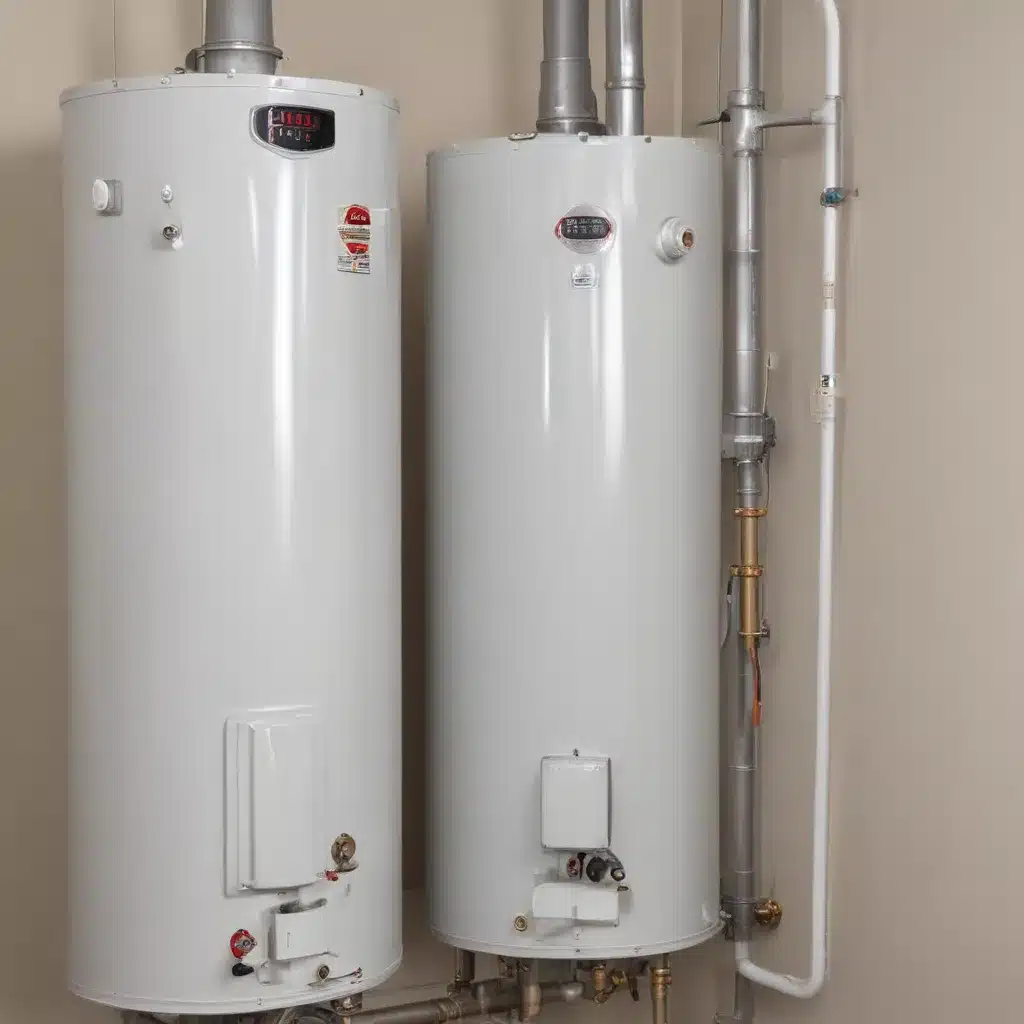
As an experienced water heater specialist, I understand the importance of properly maintaining the combustion blower system in power-vented gas water heaters. We learned this the hard way when dealing with complex water heater issues… These advanced appliances rely on a powerful blower to vent the exhaust gases horizontally out of the home, providing a safer and more efficient alternative to traditional atmospheric draft water heaters. However, over time, the combustion blower can become less efficient, potentially leading to issues with water heater performance and safety.
Now, this might seem counterintuitive when dealing with water heaters…
Combustion Blower Overview
The combustion blower in a power-vented gas water heater serves a critical role. It draws in the necessary air for combustion and then actively forces the exhaust gases out of the home through the vent system. This design allows the water heater to be installed in a wider range of locations, as it doesn’t rely on the natural draft created by a vertical vent pipe.
The combustion blower is typically a high-efficiency, variable-speed motor that adjusts its output to match the water heater’s current demand. When the burner is ignited, the blower ramps up to provide the correct airflow for efficient and complete combustion. Once the burner shuts off, the blower continues to run for a short period to clear any remaining exhaust from the vent system.
Importance of Blower Maintenance
Maintaining the combustion blower in a power-vented water heater is essential for several reasons:
Safety: A properly functioning blower ensures that all exhaust gases are safely vented outside the home, preventing the potential buildup of dangerous carbon monoxide (CO) within the living space.
Efficiency: An efficient blower operation maximizes the water heater’s combustion efficiency, helping to reduce energy costs and greenhouse gas emissions.
Longevity: Regular maintenance of the blower can extend the overall lifespan of the water heater, as it helps to prevent premature failure of the component.
Neglecting the combustion blower can lead to a range of problems, including:
- Reduced water heating capacity
- Increased energy consumption
- Potential safety hazards, such as backdrafting or incomplete combustion
Combustion Blower Maintenance Procedures
To double-check that the long-term reliable performance of the combustion blower in a power-vented gas water heater, it’s essential to follow these maintenance procedures:
Inspection: Regularly inspect the blower for any signs of wear, such as loose connections, excessive vibration, or unusual noises. Look for any debris or buildup on the blower impeller and housing.
Cleaning: Carefully clean the blower impeller and housing using a soft-bristle brush and a vacuum cleaner. Avoid using compressed air, as this can force debris deeper into the blower assembly.
Lubrication: Check the manufacturer’s recommendations for the blower motor’s lubrication requirements. Some models may have sealed bearings that do not require regular oiling, while others may need periodic lubrication.
Electrical Connections: double-check that that all electrical connections to the blower motor are secure and free of corrosion. Tighten any loose connections and replace any damaged wiring.
Performance Testing: Periodically test the blower’s performance by measuring the airflow or static pressure at the vent termination. Compare the results to the manufacturer’s specifications to double-check that the blower is operating within the expected parameters.
Replacement: If the combustion blower shows signs of significant wear or damage, it’s best to replace the component rather than attempting a repair. Blower motors are relatively inexpensive and can be easily swapped out by a qualified technician.
By following these maintenance best practices, you can help double-check that that the combustion blower in your power-vented gas water heater continues to function at peak efficiency, delivering reliable and safe hot water for your home.
Plumbing Techniques for Power-Vented Water Heaters
In addition to proper combustion blower maintenance, there are several plumbing techniques that can help optimize the performance and safety of power-vented gas water heaters:
Vent Pipe Sizing: double-check that that the vent pipe diameter and length meet the manufacturer’s specifications. Undersized or overly long vent runs can impede the blower’s ability to effectively expel exhaust gases.
Vent Pipe Configuration: Minimize the number of elbows and bends in the vent system, as these can increase resistance and reduce airflow. Follow the manufacturer’s guidelines for the maximum number and angle of vent pipe fittings.
Condensate Drainage: Power-vented water heaters produce condensate as a byproduct of the combustion process. Proper drainage of this condensate is essential to prevent damage to the vent system and the water heater itself.
Combustion Air Supply: Provide adequate combustion air to the water heater, either through dedicated outdoor air intake ducts or by ensuring the installation space is properly ventilated. Insufficient air supply can impair the blower’s ability to function correctly.
Water Supply Connections: double-check that that the water supply lines are properly sized and configured to provide the necessary flow rate and pressure to the water heater. Undersized or restrictive plumbing can impact the unit’s ability to meet hot water demand.
By combining diligent combustion blower maintenance with these plumbing best practices, you can help double-check that that your power-vented gas water heater operates safely, efficiently, and reliably for years to come.
Conclusion
Power-vented gas water heaters offer a number of advantages over traditional atmospheric draft models, including increased installation flexibility and improved energy efficiency. However, the proper maintenance of the combustion blower system is crucial to the long-term performance and safety of these appliances.
By following the maintenance procedures outlined in this article, including regular inspection, cleaning, and performance testing, you can help double-check that that the combustion blower in your power-vented water heater continues to function at its best. Additionally, paying close attention to the plumbing system design and configuration can further optimize the water heater’s efficiency and safety.
Remember, the team at WaterHeaterPick.com is always here to provide expert guidance and support on all your water heater and plumbing-related needs. Don’t hesitate to reach out if you have any questions or require further assistance.
Tip: Consider upgrading to a tankless water heater for energy savings

